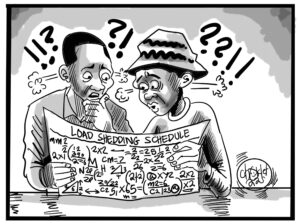Economist Chibamba Kanyama says continuous debt servicing at more that 38 per cent of the budget coupled with constant borrowing could further slowdown the growth of Zambia’s economy which was recorded at 2.6 percent in the first quarter of 2018.
Central Statistical Office announce last month that Zambia’s economic growth slumped to 2.6 per cent in the first quarter of this year, down from 3.6 per cent during the corresponding period last year, mainly due to negative growth rates in the agriculture and transport sectors.
Reacting to the development in an interview, Kanyama wondered how much the country would pay towards debt servicing by the end of the year given a spending of at least 38 per cent of the total budget in the first quarter.
“A growth rate of 2.6 percent is not bad for a country given that the data captures the time of the year when there is negligible economic activity. You may wish to know that the first three months of the year are generally slow, companies coming off the low Christmas business cycle and gearing themselves to kick-start operations. More significantly, the purchasing power, which is the critical driver of industrial output is significantly weak after Christmas as people are coming of a spending spree. Government itself, which accounts for nearly two thirds of economic activities through the supply-chain spending, is really beginning to spend in the second quarter of the year due to long tender lead times; and these are done shortly after the budget for the ensuing year is implemented,” he explained.
“The real critical periods that account for the bigger portion of economic growth are April to December. I am expecting growth in the second and third quarter of 2018 to be above three per cent mainly from agricultural output albeit weaker than the same period last year 2017, copper output due to increased production in response to the marginally high copper prices, construction activities as well as relatively good performance in the financial sector. Trade related activities should equally have a good share of growth; you may have observed the Kwacha appreciating in value in past few days on account of traders offloading the hard currency to meet quarterly tax requirements. This alone is a positive indicator of how the second and third quarter of 2018 will be.”
he stressed that government borrowing remained the biggest threat to economic growth.
“The only threat is the increased government borrowings as a result of the deficit and this is largely due to external debt financing. In the first quarter of 2018, government spent US$259 million in external debt financing, which is 38 percent of the total amount budget for the entire year (US$689 million). If we could spend this much in the first quarter, how do we manage the rest of the year. This is an issue I am sure the Minister of Finance is currently managing,” said Kanyama.
“The measures recently announced were primarily aimed at managing the scenario so that the macroeconomic pressures to do affect the buoyance and optimism of the private sector. I should actually applaud the Zambian businesses for standing resilient, continuing to invest and capitalise operations despite the imbalances in the macro-economy. Should companies continue to be bullish for the rest of the year, we should record at least 4.5 percent growth under the circumstances, a good position to allay fears of offshore investors that the economy is sinking without an IMF (International Monetary Fund) programme.”


















